As the calendar turns to another school year, now is also a good time to scout for plant-parasitic nematodes in row crops. Typically, the peak time for scouting is near harvest, while plants are still growing, as nematode populations are often greatest at this time. Gathering this information helps plan an effective nematode management plan for upcoming years.
This article will summarize common symptoms caused by three major plant-parasitic nematodes in Florida: root-knot nematode, sting nematode, and reniform nematode. Recognizing these symptoms helps guide subsequent sampling, which is needed for confirmation, and helps gauge crop damage. Soil or soil and root samples should be submitted to a professional diagnostic laboratory, such as the UF/IFAS Nematode Assay Laboratory. Detailed sampling instructions are provided at the Nematode Assay Laboratory website.
–
Root-Knot Nematode Symptoms
Root-knot nematode is common and damaging, and most crops are affected by one or more root-knot nematode species. Like most plant-parasite nematodes, damage from root-knot nematode visible on crop foliage typically occurs in patches (Figure 1). This damage often becomes noticeable later in the year when nematode populations increase and crops may be under more environmental stress. Symptoms vary in severity and may include slight yellowing (Figure 2), stunting, wilting, and death of individual leaves or the whole plant (Figure 1).
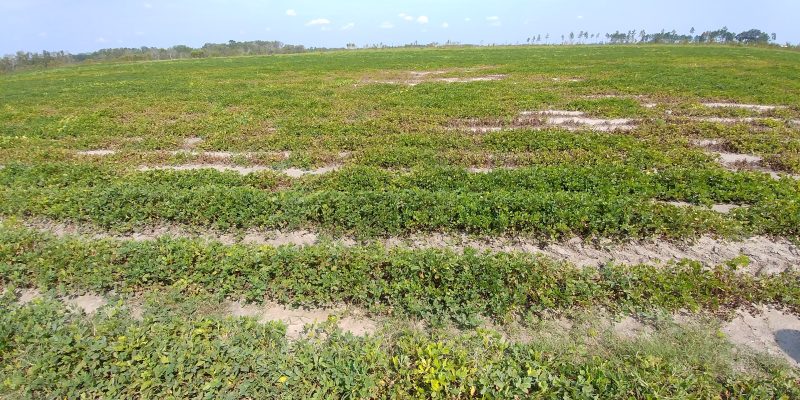
Figure 1. Patchy stunting, plant death, and yellowing in a peanut field with severe peanut root-knot nematode infestation. Photo by Zane Grabau, UF/IFAS.
–
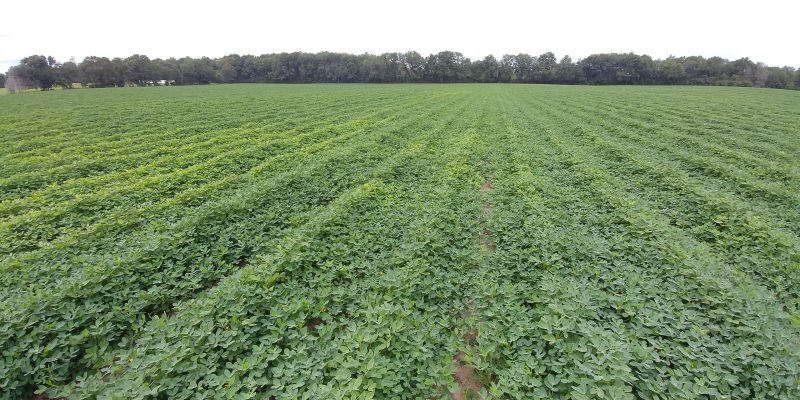
Figure 2. Light, patchy chlorosis (yellowing of leaves) in a peanut field due to peanut root-knot nematode. Photo by Zane Grabau, UF/IFAS.
–
Belowground symptoms of root-knot nematode are more distinct than aboveground symptoms. Galling is the characteristic symptom of root-knot nematode and are irregular swellings of the root (Figures 3 and 4). The size of galls and the portion of the root system affected will vary based on time of year, initial nematode load, crop, and environmental conditions. The root system may also be somewhat stunted and have fewer lateral roots than a healthy root system.
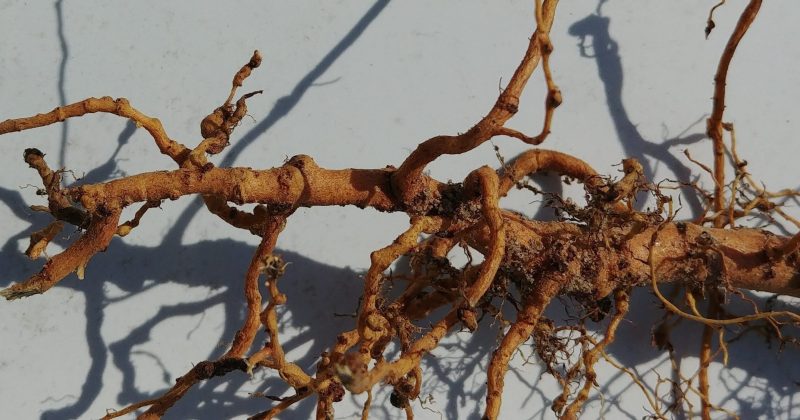
Figure 3. Galling from southern root-knot nematode on cotton roots. Photo by Zane Grabau, UF/IFAS.
–
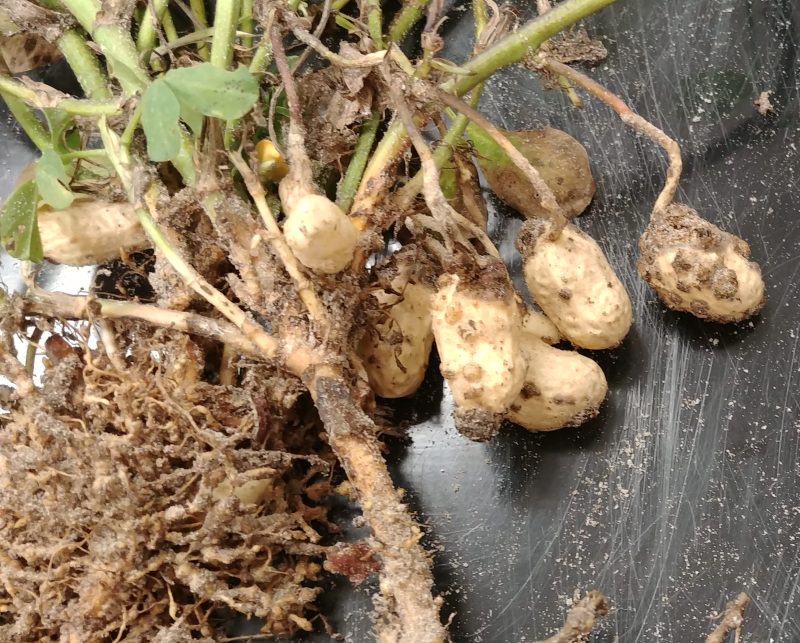
Figure 4. Galling on peanut root system, including roots and pods. Photo by Zane Grabau, UF/IFAS.
–
Sting Nematode Symptoms
Sting nematode symptoms tend to appear early in the growing season, and this highly damaging nematode can kill or severely stunt plants as they attack growing points. This results in patches of poor stand and severely stunted, yellowed plants (Figure 5). Sting nematode causes severe stunting of the root system as well as pruning of lateral roots, proliferation of small lateral roots, and browning/blackening of roots, especially at the root tips (Figures 6 and 7). Peanut pods affected by sting nematode have characteristic small, pin-prick lesions (Figure 7). Sting nematode is restricted to very sandy soils (e.g. 90% or more), a fact that can aid in diagnosis.

Figure 5. Patches of reduced stand, severely stunted plants, and yellowing in a peanut field with sting nematode infestation. Photo by Zane Grabau, UF/IFAS.
–
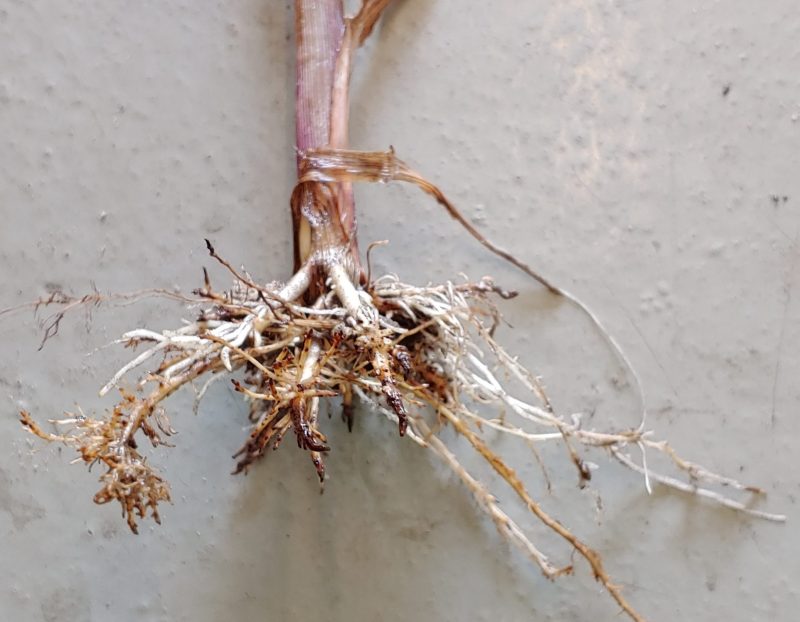
Figure 6. A corn root system damaged by sting nematode exhibits stunting; pruning and bearding of lateral roots, and brown/black dying root tips. Photo by Zane Grabau, UF/IFAS.
–
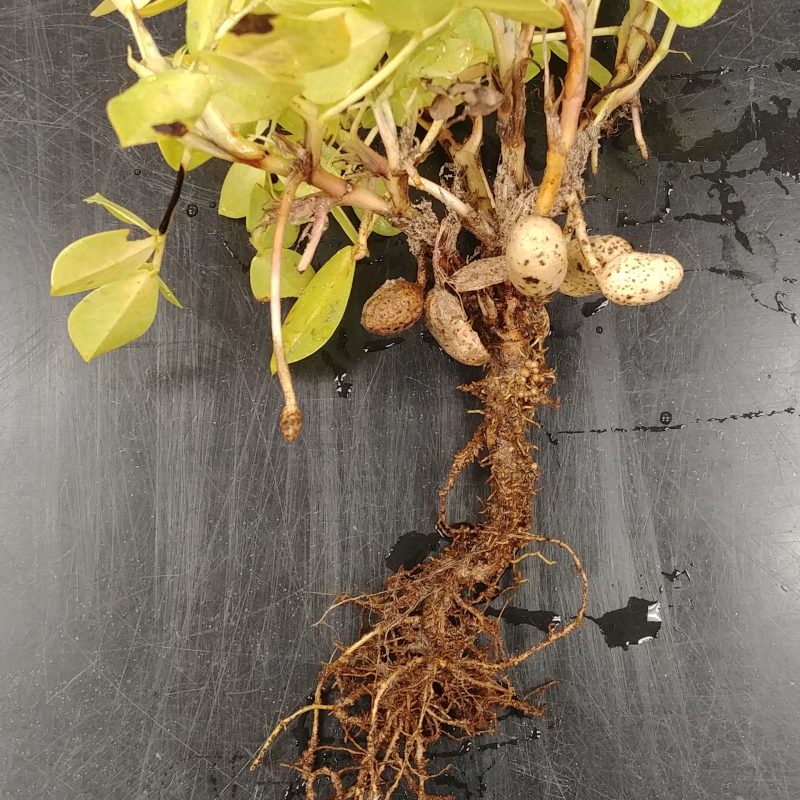
Figure 7. Symptoms of sting nematode damage on peanut root system. The root system is severely stunted with pruned lateral roots. Pegs and pods have tiny, pin-prick lesions. Photo by Zane Grabau, UF/IFAS.
–
Reniform Nematode Symptoms
Symptoms of reniform nematode infection are much less distinct that root-knot or sting nematode. While reniform nematode can stunt foliage and roots, reducing yield (Figure 8), this aggressive nematode can have a more uniform distribution across a field, so hotspots are less noticeable. Stunting by reniform nematode is often relatively subtle as well. Root symptoms are also indistinct, as it does not cause galling or root pruning. Production factors do help identify fields at greater risk of reniform nematode infestation. Reniform nematode does well in a range of soil types, including ones with higher clay or silt content. Reniform nematode is mostly likely to be found in fields with frequent cotton and soybean production, as these are the most row crops it feeds on.
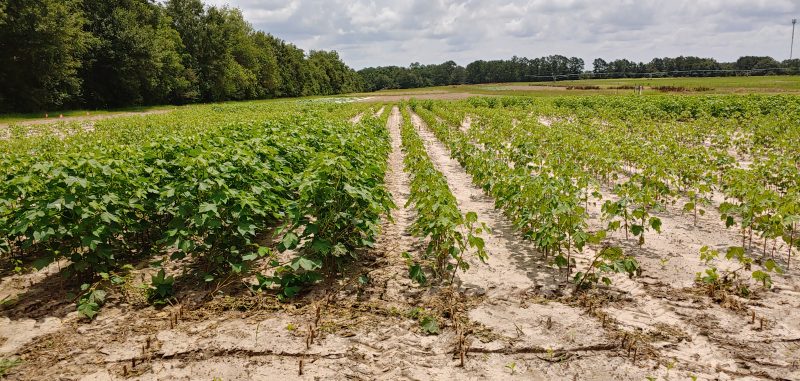
Figure 8. Stunting from reniform nematode in a small plot research trial. The plot on the left was treated with a fumigant whereas the plots on the right were not. Photo by Zane Grabau, UF/IFAS.
–
In summary, as harvest season nears, look for potential nematode symptoms and do not hesitate to collect samples for diagnosis to guide future crop rotation and management decisions. For more information on nematode management, use the following publication links:
–
Management of Plant-Parasitic Nematodes in Florida Peanut Production
–
Management of Plant-Parasitic Nematodes in Florida Field Corn Production
–
Management of Plant-Parasitic Nematodes in Florida Cotton Production
–
Management of Plant-Parasitic Nematodes in Florida Soybean Production
–
Nematode Management in Cucurbits (Cucumber, Melons, Squash)
–
Nematode Management in Tomatoes, Peppers, and Eggplant
–
Fumigant and Non-fumigant Nematicides Labeled for Agronomic Crops in Florida
–
